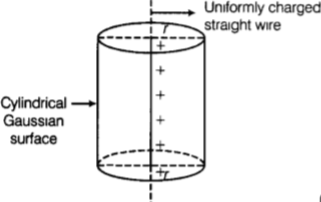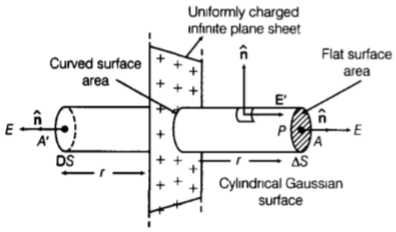Ask questions which are clear, concise and easy to understand.
Ask QuestionPosted by Anshika Tiwari 6 years, 5 months ago
- 1 answers
Posted by Mayank Kumar 6 years, 5 months ago
- 1 answers
Prakhar Dubey 6 years, 5 months ago
Posted by Lalita Meghwal 6 years, 5 months ago
- 4 answers
Simran Kalra 6 years, 5 months ago
Mandavi Tripathi 6 years, 5 months ago
Posted by Manisha Sandhu 6 years, 5 months ago
- 0 answers
Posted by Rahul Yadav 6 years, 5 months ago
- 1 answers
Posted by Shubham Kumar Gupta 6 years, 5 months ago
- 0 answers
Posted by Suyash Kulshrestha 6 years, 5 months ago
- 1 answers
Yogita Ingle 6 years, 5 months ago
Attraction may occur between two oppositely charged bodies or a charged body and an uncharged one. That is why in attraction, one is not sure if both bodies are charged, However in repulsion, there are two bodies that have the same charge. That is why repulsion is the sure test of electrification.
Read more on Brainly.in - https://brainly.in/question/1756095#readmore
Posted by Dikshita Baruah 6 years, 5 months ago
- 1 answers
Posted by Pawanpreet Sallan 6 years, 5 months ago
- 1 answers
Posted by Yash Patel 6 years, 5 months ago
- 0 answers
Posted by Bhumika Ramchandani 6 years, 5 months ago
- 1 answers
Samruddhi Dundage 6 years, 5 months ago
Posted by Asem Thomason 6 years, 5 months ago
- 1 answers
Gaurav Seth 6 years, 5 months ago
Electric Field Intensity:
Electric field intensity is the measure of intensity or strength of electrical force per unit charge at any given point in the electric field. It is denoted by the letter E and its Unit is Newton per Coulomb (N/C).
Mathematically we can derive the expression or formula for the Electric field intensity as:
As shown in the figure below:
Let, Q1 and Q2 be the two charges separated by a distance “d” and let F be the force built between them.
Now, If we need to calculate the electric field intensity in Q2 due to the electric field of Q1 then by definition the electric field intensity is the electrical force per unit charge.
Or,
And by Coulomb's law, we know the force F =
Thus,
Or,
Posted by Hritika Singh 6 years, 5 months ago
- 1 answers
Aman Singh 6 years, 5 months ago
The electric flux is defined as the electric field passing through a given area multiplied by the area of the surface in a plane perpendicular to the field. Another statement of Gauss's law is that the net flux of an electric field through a surface divided by the enclosed charge is equal to a constant. The surface that we choose for application of Gauss' theorem is called Gaussian surface. We usually choose a spherical Gaussian surface
- Electric field due to a long straight wire of sheet

- Electric field due to a plane sheet of charge

Posted by Dilip Kumar 6 years, 5 months ago
- 6 answers
Shreyansh Rawat 6 years, 5 months ago
Posted by Rohit Kumar 6 years, 5 months ago
- 0 answers
Posted by Srishti Singh 6 years, 5 months ago
- 0 answers
Posted by Don Stranger 6 years, 5 months ago
- 0 answers
Posted by Hardeep Singh 6 years, 5 months ago
- 1 answers
Posted by Prakash Singh 6 years, 5 months ago
- 1 answers
Yogita Ingle 6 years, 5 months ago
The divergence of electric field through a surface is equal to the charge enclosed in that surface (Gauss Law).
Thus clearly if they would have formed closed loop, the divergence would have been always zero irrespective of the charge enclosed, like that in case of magnetic lines of force.
Posted by Bablu Jyani Jyani 6 years, 5 months ago
- 1 answers
Yogita Ingle 6 years, 5 months ago
Electric Flux is defined as a number of electric field lines, passing per unit area. It is another physical quantity to measure the strength of electric field and frame the basics of electrostatics. It is also defined as the product of electric field and surface area projected in a direction perpendicular to the electric field. Let’s understand what the term flux actually means, with an example.
Example:
Suppose there a liquid flowing with velocity ‘v’, through tiny surface dS, in a normal direction with respect to the surface. The rate of flow of water will be volume passing through the area per unit time that is v dS.
Volume = Area × Length
Differentiating the above relation with respect to time, we get
d Volume/ dt = dS × d length/ dt
Flow of liquid = dS × v
where dS is a surface area perpendicular to the velocity v of water, and v is the velocity of liquid (rate of change of length per unit time)
This flow of liquid, that is the quantity v dS, is called flux. If there is some angle θ between the velocity of liquid and surface area dS and flux of liquid, can be evaluated from the relation:
Flow of liquid = v dS cos θ

myCBSEguide
Trusted by 1 Crore+ Students

Test Generator
Create papers online. It's FREE.

CUET Mock Tests
75,000+ questions to practice only on myCBSEguide app
 myCBSEguide
myCBSEguide
Shatayu Ganvir 6 years, 5 months ago
0Thank You